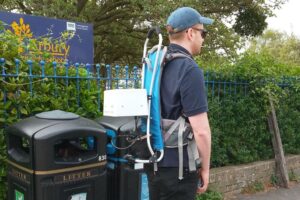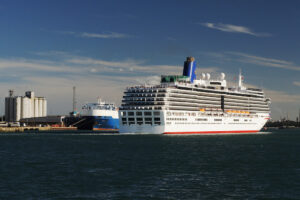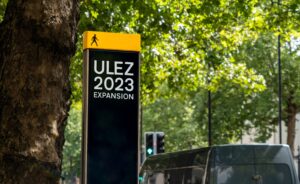Proposals to toughen emissions standards for all heavy vehicles operating in London and the expansion of the Ultra Low Emission Zone (ULEZ) outside of the city centre from 2020 have been launched for consultation today.
According to City Hall, the plans would bring a 20% reduction in NOx across London by 2020, rising to 30% by 2021.
Proposed boundary for ULEZ from 2021The Mayor of London, Sadiq Khan, and Transport for London (TfL), are seeking views on the proposals, which would toughen standards for the existing Low Emission Zone (LEZ) for HGVs and place stricter requirements on light vehicles.
London currently operates a city-wide LEZ which requires HGVs entering the city to meet the Euro IV Particulate Matter (PM) standard or pay a daily charge of £200. Vans and minibuses are required to meet a Euro 3 PM standard.
From October 2020, City Hall is proposing that all heavy vehicles driving in the London-wide LEZ will need to meet a Euro VI standard for Nitrogen Oxides (NOx) and PM, or pay an extra daily charge of £100. Vehicles that do not meet the Euro 4 PM standard would now need to pay a total £300 daily charge.
Expansion
Views are also being sought on the size and scope of the ULEZ, which is due to come into effect in the centre of the city from April 2019. From 2021, this would expand from central London up to the North and South Circulars for all light vehicles, excluding taxis, City Hall has said today.
The ULEZ will further toughen emissions standards in the capital, with petrol cars, vans and minibuses required to meet the Euro 4 standard, whilst diesel vehicles will be required to meet the latest Euro 6 standard in order to avoid a charge of £12.50 per day.
This would replace the a £10 emissions surcharge — T-Charge — which is paid on top of the Congestion Charge during weekday peak hours for light vehicles.
Once in effect the ULEZ will operate 24 hours a days, seven days a week. The proposals could affect 100,000 cars a day, 35,000 vans a day and 3,000 lorries a day, City Hall projections suggest.
Commenting on the proposals, the Mayor of London, Sadiq Khan, said: “I am determined to take the bold action needed to protect the public from London’s poisonous, deadly air. I can’t ignore the shameful fact that London’s air is so toxic it harms children’s lungs, exacerbates chronic illness and contributes to thousands of premature deaths each year.
“Following the successful introduction of the T-Charge, and confirmation of the central London ULEZ, I am moving ahead with the next stage of my plan to expand the Ultra-Low Emission Zone up to the busy north and south circular roads.”
‘Sunset period’
Plans to give residents living within the central London Congestion Charge zone extra time to comply with the requirements have also been outlined.
This ‘sunset period’, which would end in October 2021, would entitle residents to a 100% discount on the ULEZ daily charge, but would continue to pay the daily Congestion Charge and T-Charge.
At the end of this period residents would be liable for the full daily charge if they use a vehicle that does not meet the ULEZ standards.
Alex Williams, TfL, Director of City Planning, added: “The Mayor has set out his vision for how harmful emissions will be dramatically reduced in the capital and we are working full speed to deliver his ambitious agenda. The successful introduction of the T-Charge, the greening of the bus fleet and the bringing forward of the date for the central London ULEZ to April 2019 are all clear demonstrations of our intent to clean up London’s dangerously polluted air.
“The plan to expand the ULEZ up to the North and South circular is the next step change needed towards bringing the city’s air within legal limits. We look forward to Londoners helping us shape these proposals through the consultation.”
The consultation closes on 28 February 2018.
















